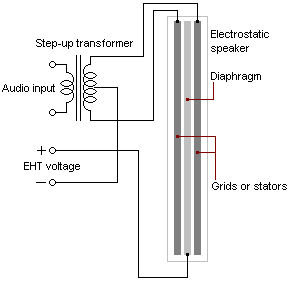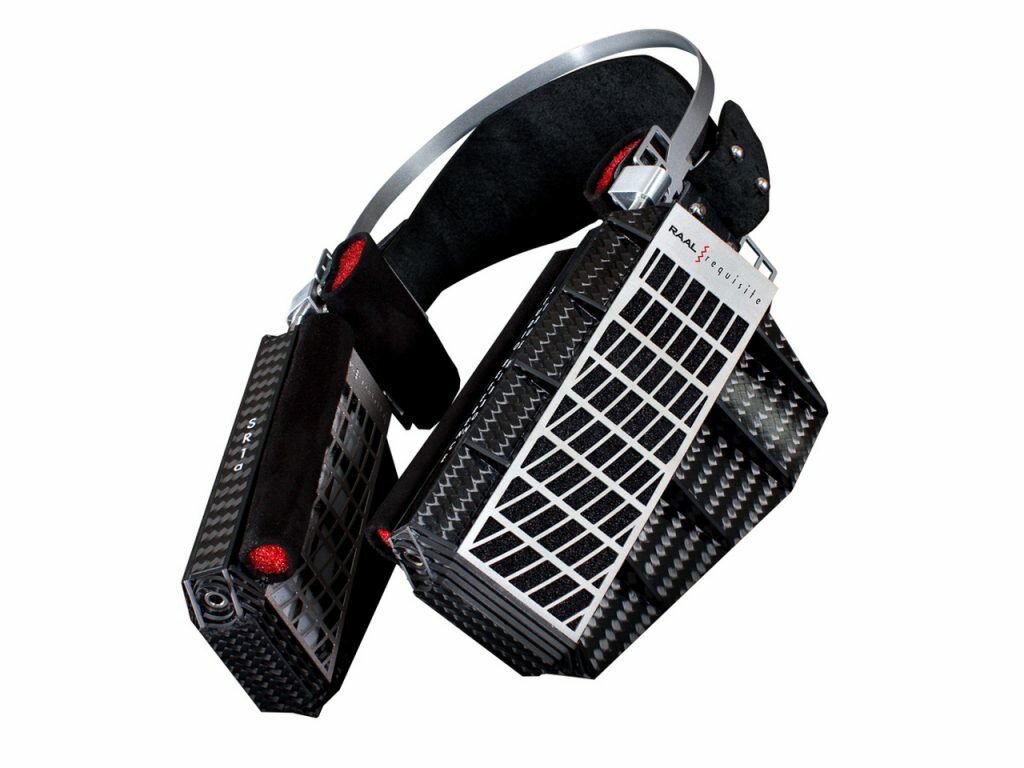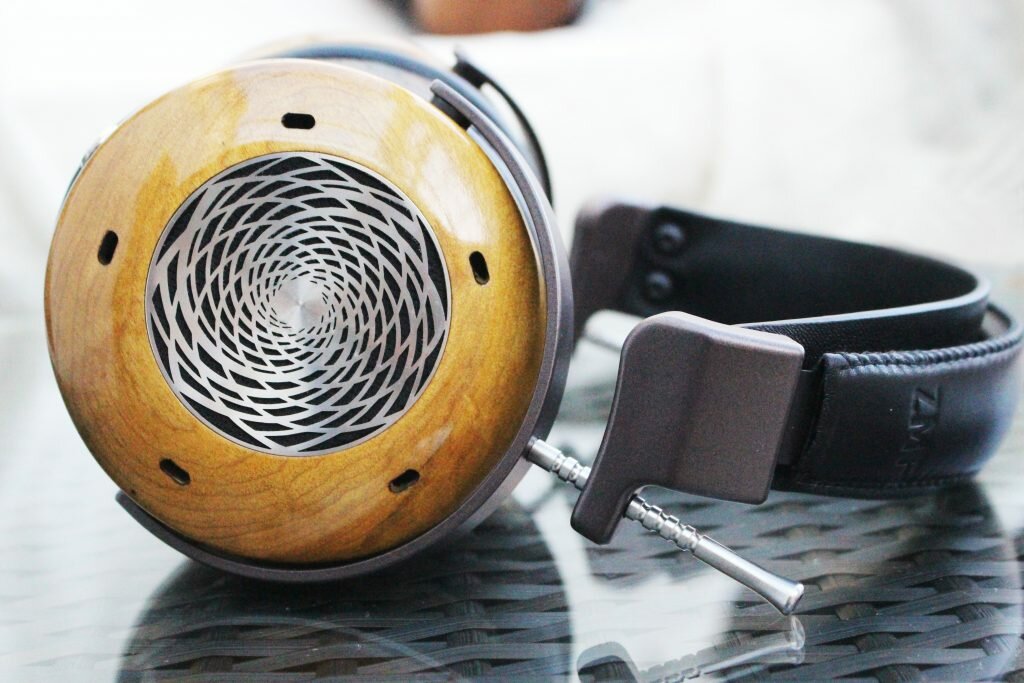Searching for the perfect headphones may seem like an overwhelming task. This guide aims to make it that much easier by explaining the different types of headphone drivers and their defining characteristics.
What Is A Headphone Driver?
A headphone driver is a transducer element capable of converting electrical signals to sound energy. Since many consider drivers to be the most important part of headphone design, the following article aims to explore the 5 different headphone types in greater detail.
1. Dynamic drivers
Dynamic drivers are the most common set of drivers in the headphone market. This is primarily owing to its low price.
They work by using magnets (typically neodymium), voice coils and diaphragms to produce air movement and consequent sound production.
These neodymium magnets create a magnetic field which allows the voice coil to oscillate; the resulting electromagnetic relationship allows rapid compression and decompression of air and sound waves to propagate.
Since dynamic drivers are great at displacing larger volumes of air, they tend to excel in authoritative and powerful bass responses. The other side of the coin, however, is that this displacement of air can translate to distortion where higher volumes are concerned.
Some higher-end headphone models such as ZMF Verité have avoided this shortcoming with the implementation of beryllium-coated dynamic drivers. The great advantage here is that beryllium features exceptional stiffness-to-mass ratio enabling lower distortion and higher frequency sound propagation.
The unique sound acoustic properties of beryllium, however, come at a cost and is a reason why they are not adopted widely in mass markets.
Benefits:
- Great bass response
- Cost-effective design
Limitations:
- Absolute total harmonic distortion at higher volume levels
2. Planar drivers
Planar drivers capture much less of the market share than dynamic drivers. They can usually be found in higher-end headphones such as those from HiFiMAN or Audeze.
Like dynamic drivers, they use the concept of magnetic field to produce sound. However, the magnetic fields directly affect the diaphragm as opposed to voice coils in dynamic driver headphones.
This, in effect, makes the diaphragm containing conductive elements part of the audio circuit. The conductive traces within the diaphragm are sandwiched between dipolar magnets where magnetic fields are created every time current passes through. The push and pull of the diaphragm produces air which escapes in gaps between the plane of the magnets to produce a sound.
Since the conductive elements of the diaphragm form part of the audio circuitry, the sound it produces tends to be of a high level with fantastic transient response and lower amounts of distortion. However, it results in heavier headphones requiring larger amounts of power from external amplifiers.
HiFiMAN, a world leader in planar magnetic headphones, have constantly brought forth innovations in this aspect of headphone design. Submicron thick conductors within the diaphragm and asymmetrical magnetic system design are some concepts developed to further reduce sound interference as well as total harmonic distortion.
Examples of this can be seen in the HiFiMAN’s HE-1000 V2 and HE1000Se headphones.
T + A, the German loudspeaker giant, have also executed this form of innovation in their newly introduced Solitaire P headphones. The headphones make use of micrometer thick diaphragms with micrometer thick conductors.
These in turn are surrounded by rod-shaped high-performance neodymium magnets to generate a linear magnetic field applied evenly across the diaphragm. The resulting sound produces a wide dynamic range with impressive freedom from distortion and linearity.
Benefits:
- High quality sound
- Low-distortion levels
Limitations:
- Can be more expensive
- Usually requires an optimal headphone amplifier

3. Electrostatic drivers
Electrostatic headphones are an often-overlooked headphone type owing to their higher cost and need for dedicated amplifiers.
Rather than working on the principles of electromagnetism, they are built with electrostatic tenets in mind. Static charge applied across a diaphragm lying between perforated stators enables movement through the forces of attraction and repulsion.
Since the diaphragm film is incredibly lightweight and responds rapidly to electric field changes, electrostatic headphones produce outstanding transient responses.
They require a special amplifier to render a signal that positively charges the diaphragm. Movement is created when the diaphragm membrane is attracted or repelled by the charged electrodes of the front and rear stator plates.
Since the electrons in the electric field cause rapid moving mass of the diaphragm membrane, electrostatic headphones produce a highly desirable swift transient response. However, some may argue that the sonic delivery may not have the most accurate tonal balance.
STAX Ltd. have implemented electrostatic technologies in their headphones for decades. Since design of electrostatic headphones can be challenging, they are continually produced in limited quantities in Japan. However, more and more companies are looking to translate this technology to larger audiences.
HiFiMAN, for example, have recently launched the Jade II electrostatic headphones and matching amplifier at a price of $2499. Kaldas Research have taken this one step further by launching the RR1 Conquest electrostatic headphones which retail for an unheard of $500.
In the portable audio scene, Shure have taken on the seemingly impossible of implementing electrostatic technology within in-ear monitors. The KSE1500, for example, was the first sound isolating earphones to feature a fully electrostatic design.
Sonion’s electrostatic tweeters have recently caught on with companies wishing to obtain the benefits of electrostatic technology in earphone design. However, these tweeters pertain more to the ‘electrets’ category with a pre-charge that does not require an electrical bias voltage.

Benefits:
- Ultra-low distortion
- Fantastic imaging and soundstage
Limitations:
- Not the most tonally accurate
- Requires dedicated amplifiers
- Can be costly
4. Ribbon drivers
Ribbon drivers or ‘tweeters’ are an entirely different concept altogether. They typically make use of thin corrugated metal such as aluminium which move in response to adjacent magnets.
This allows the ribbon to act as both a voice coil and diaphragm as signal passes through it. Since ribbon drivers eliminate the need for membranes or diaphragms, they maintain leading edge transients and fast impulse response.
With their corrugated design, their surface area helps to propel a larger volume of mass than other headphone drivers. This gives a sense of spaciousness and air. In addition, ribbon designs classically excel in treble performance and micro-dynamics.
Like electrostatic drivers, they are difficult to manufacture and their inherent design is responsible for their high costs of production.
Raal-Requisite have disrupted the market with their SR1a headphones – the world’s first fully modular true ribbon headphones. Their dual metal layer ribbon has taken years of research to develop with a diaphragm that is said to be quiet as well as fast to accelerate and decelerate.
Their ultra-low impedance of 0.018 ohms, however, do require the use of a speaker amplifier and provided impedance interface box to drive the ribbon headphones to their full potential.
Benefits:
- Very low distortion
- Fantastic imaging and soundstage
Limitations:
- Requires dedicated amplifiers / impedance box match
- Can be costly

5. Magnetostriction (bone conduction) drivers
Bone conduction headphones have picked up steam owing to their unique ability for enhanced spatial awareness and use in hearing impaired individuals. They primarily use magnetostriction drivers which convert electromagnetic energy into kinetic energy and consequent vibrations.
These vibrations bypass the ear canal and instead propagate along bone contents towards the inner ear.
Since the inherent design of bone conduction is non-isolating, sound quality is often not the best. However, their lightweight and portable design are often useful in situations such as cycling or other sporting activities where spatial awareness is crucial. The history of bone conduction drivers and real-world application can be read about more here.
Benefits:
- Enhanced spatial awareness
- Useful in certain forms of hearing loss
Limitations:
- Lack of high-fidelity sound
- Not sound-isolating (owing to their design)

Conclusion
To conclude, each headphone driver presents with its own benefits and drawbacks. The headphone space is an interesting one as more technologies aim to overcome inherent limitations to produce that ‘perfect sound’.
Of course, implementation is also a crucial part of the headphone building process to fine tune the end sound to alter speed, dynamics, resolution, and imaging. For discerning listeners who require ultra-low distortion, electrostatic and ribbon drivers seem the way to go.
However, for those wishing for fast transient speeds without special amplifiers, planar magnetic drivers seem to capture fast transient responses for a lesser price. Fans of authoritative and weighty bass may be tempted by the dynamic driver headphone.
As with all headphones, though, your mileage may vary and these represent fundamental sonic acoustics given the driver design type. Will you be using headphone driver type to inform your next purchase? Let us know your thoughts…
You may also be interested in:
- Best Audiophile Headphones
- Best Studio Headphones
- Planar Magnetic Headphones Explained
- Electrostatic Headphones Explained

